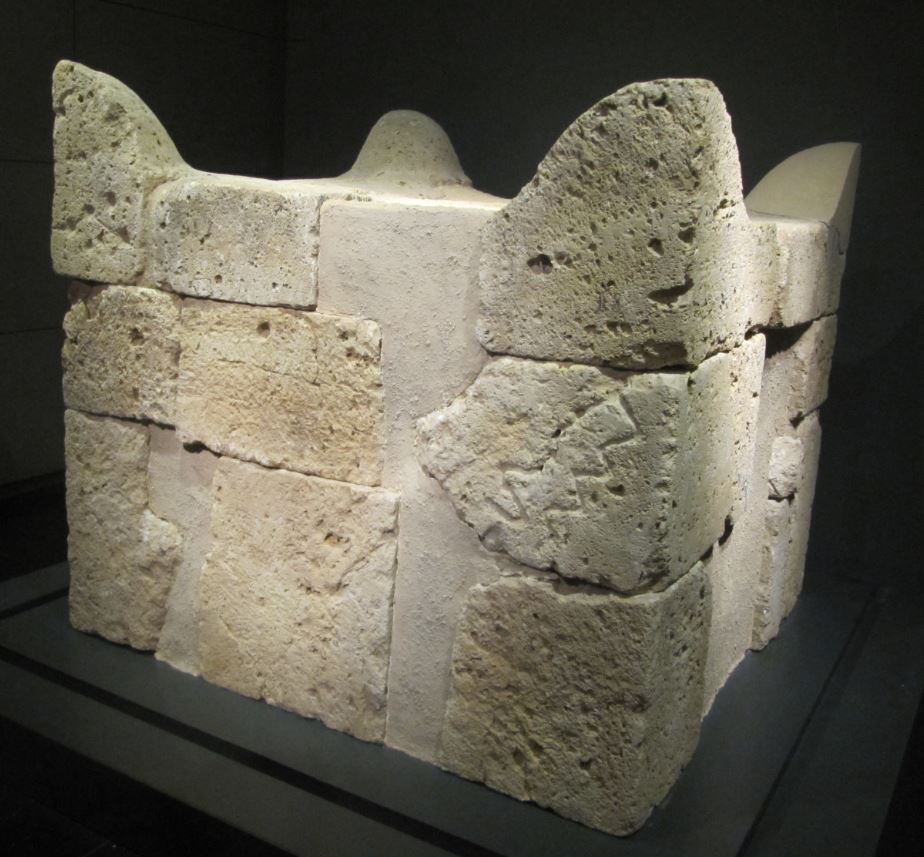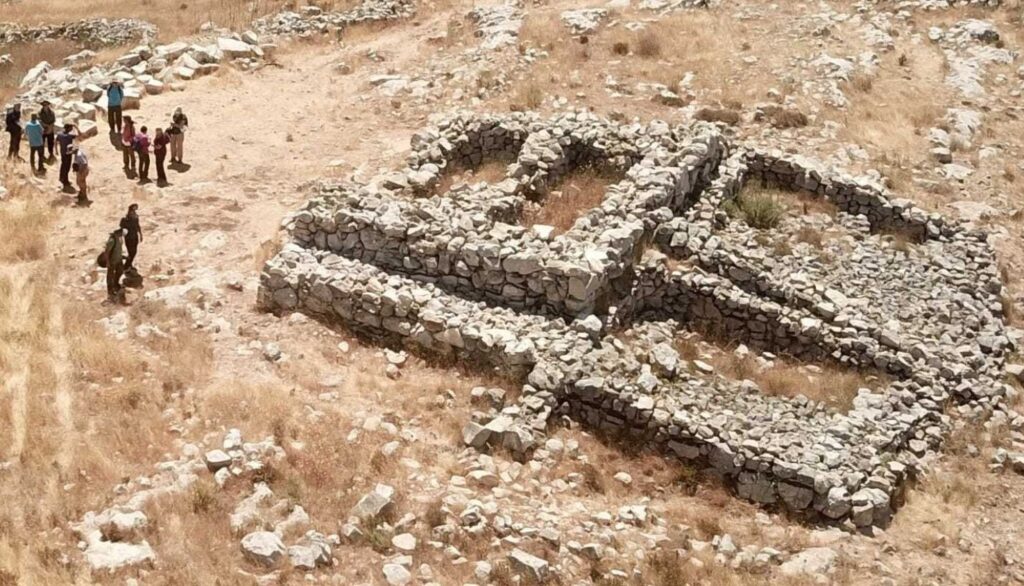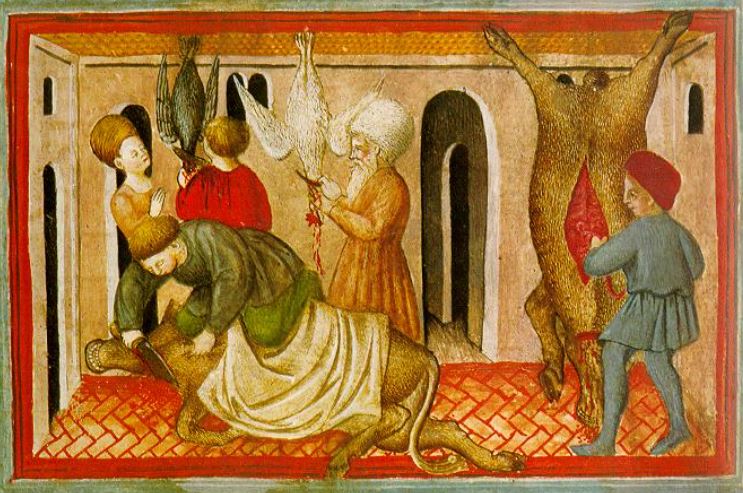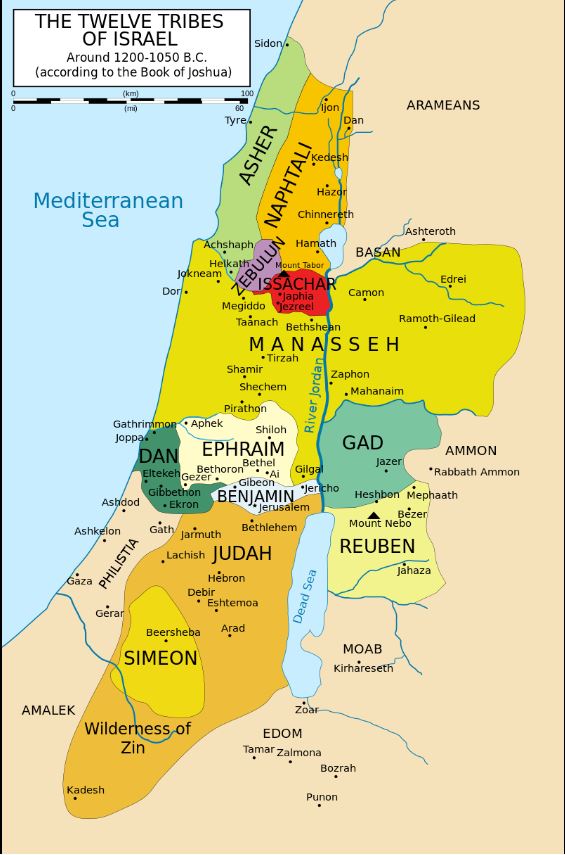The Torah tells us many details about the Tabernacle and its vessels and the Neviim add even more, about Solomon’s Temple, Ezra’s Temple and the Temple envisioned by Ezekiel for the future. Despite, or perhaps because of all these details, there is confusion about even the most basic things. Maimonides explains that the Second Temple is a cross between Solomon’s building and the one described by Ezekiel:
“The [design of the] structure built by [King] Solomon is described explicitly in [the Book of] Kings. [In contrast, the design of] the future Temple, though mentioned in [the Book of] Ezekiel, is not explicit or explained. Thus, the people [in the time] of Ezra built the Second Temple according to the structure of Solomon, [including] certain aspects which are explicitly stated in Ezekiel.” (Maimonides, Hilchot Bet haBechira 1:4)
One of the issues that is unclear, both in the Biblical texts and in their Rabbinic interpretations, are the size and the materials of the main altar. The altar in the desert seems pretty clearly defined:
“You shall make the altar of acacia wood, five cubits long and five cubits wide—the altar is to be square—and three cubits high. Make its horns on the four corners, the horns to be of one piece with it; and overlay it with copper.” (Shmot 27:1-2)
The one built by Solomon has easily understood dimensions, but the Sages dispute its material:
“He made an altar of bronze 20 cubits long, 20 cubits wide, and 10 cubits high” (Divrei HaYamim II 4:1)
“this means a stone altar instead of the bronze altar made by Moses in the desert.” (Metzudat David commentary)
Ezekiel shares his vision of an altar that is larger than the one in the desert but smaller than Solomon’s:
“Now the hearth shall be 12 cubits long and 12 broad, square, with 4 equal sides.” (Ezekiel 43:16)
The Mishnah in Middot chooses yet another dimension, the largest of all:
“The altar was thirty-two cubits by thirty-two.” (Middot 3:1)
Through a series of calcalutions about the different levels of the altar (the yesod, the sovav, the place the kohanim walk) the Mishnah gets to the “original” size, twenty-four by twenty-four amot. This fits with how the Rabbis interpret Ezekiel’s altar, effectively doubling its size:
“Just as there, [in Ezekiel’s vision], he was measuring from its center, so too here, was measuring [the altar that Moses built] from its center.” (Zevachim 59b)
Confused yet? Add in the Rabbinic assumption that all the altars were ten amot tall, despite the Torah measurements to the contrary:
“The altar constructed by Moses, and, [similarly,] that built by Solomon, and that erected by the [returning] exiles, and that to be built [in the Messianic age] are all ten cubits high. Though the Torah states [Exodus 27:1]: “Its height will be three cubits,” [that refers to] the surface on which the wood for the sacrifices was arranged.” (Maimonides, Hilchot Bet haBechira 2:5)
Despite all these size variations, Maimonides adds that there is a much smaller minimum size for the altar, only one cubit by one cubit with a height of three cubits. This minimum size was made by the Temple Institute to display in their showroom, with the plan of using it one day:

צלם, CC BY-SA 4.0 <https://creativecommons.org/licenses/by-sa/4.0>, via Wikimedia Commons
Another fascinating question is the materials of the altar. In the Torah we are told that Moses is commanded to build an altar of earth, מזבח אדמה(Shemot 20:21) yet when it is built it is made of wood covered with copper (Shemot 27:1). The commentaries explain that the copper altar was hollow and when they camped and set up the Tabernacle, it was filled with earth. In the Temple, when the altar is not moved anymore, it is not filled with earth but it must be connected to the earth:
“And, what is “an altar of earth”? It teaches that the altar must be attached to the earth, so that one may not build it on top of arches and one may not build it on top of tunnels.” (Zevachim 61b)
While the Gemara disputes whether the altar in Shilo was stone or copper (Zevachim 61b), there is agreement that by the time Solomon builds his Temple, he no longer used the copper altar built by Moses and he hid it away. The euphemism for saying it can no longer be used is that it is too small, as the Gemara declares, one says that someone is a dwarf rather than saying he isn’t fit to serve in the Temple (Zevachim 59b)
The Mishnah in Middot explains that the Temple altar was made of unhewn stones:
“The stones both of the ascent and of the altar were taken from the valley of Bet Kerem. They dug into virgin soil and brought from there whole stones on which no iron had been lifted” (Middot 3:4)
The Temple altar is a combination of stone (Shemot 20:22) and earth (Shemot 20:21) and the copper altar is hidden away.
Do we have any evidence of actual altars from ancient Israel? A few fascinating ones have been discovered. When King Hezekiah instituted his religious reform, he sent his officials all over Israel to root out “illicit” altars, some of which had been used for idolatry, others for local worship of God. Sometimes the altars were not destroyed but hidden away as they were considered holy objects.
In Tel Sheva, not far from modern Beersheva,a deconstructed altar was discovered underneath a house in the excavated town. It has roughly similar dimensions to the Torah altar – it is slightly taller but less wide – but it differs in other ways. It is made of beautifully hewn stones- exactly what Torah law forbids (Shemot 20:22) and its corners are rounded and not squared off, making it look similar to the horns of an animal. Perhaps most intriguingly, it has the image of a serpent on the side. All these details would explain why it had to be dismantled and hidden away during the reform.

Tamarah, CC BY-SA 3.0 <https://creativecommons.org/licenses/by-sa/3.0>, via Wikimedia Commons
A few kilometers east is another Biblical site, Tel Arad. Here the altar is made of unhewn stones and bricks, and its dimensions are almost exactly five by five by three cubits, the Torah’s altar size. Not only that, but the altar was discovered in an intact temple site, with a section like the Holy of Holies in the Jerusalem Temple, including an incense altar.

Chamberi, CC BY-SA 3.0 <https://creativecommons.org/licenses/by-sa/3.0>, via Wikimedia Commons
This temple, probably made by homesick soldiers stationed on the periphery of the Judean Kingdom, is the closest representation we have today of the ancient altar. Except for one. Centuries before the fortress in Arad, the Israelites entered the land and built an altar on Mount Eival, above the city of Shechem. They were following Moses’ commandment to do so (Devarim 27:5). In the 1980s Eival was excavated by the Israeli archaeologist Adam Zertal. He discovered a massive altar that included many of the details discussed in our Mishnah and Gemara: not only an altar but a ramp and and sovav and yesod:

zstadler, CC BY-SA 4.0 <https://creativecommons.org/licenses/by-sa/4.0>, via Wikimedia Commons
Is this the closest we will get to seeing an altar like the one in the Temple?










